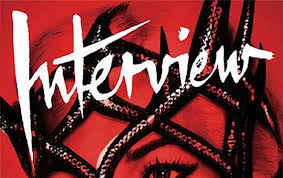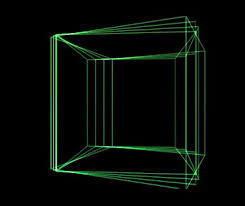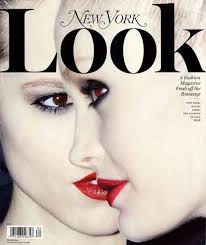 MeetSebastian.com
MeetSebastian.comSebastian Errazuriz was born in Chile and raised in London. His studies of industrial design and sculpture were divided between Santiago, Washington, Edinburgh and New York. After a period of training at Alessandro Mendini’s workshops in Milan he was first included in the “Everyday Wonders” exhibition in Geneva. Included alongside Tadao Ando, Marcel Wanders, The Campana Brothers, Ingo Maurer and Tom Dixon. Exhibited in the “Love why?” exhibition organized by Felissimo and shown in Tokyo, New York, Paris and Barcelona.
Selected as one of the top emerging designers by I.D Magazine, included in Sotheby’s Important 20th Century Designs and later represented by Cristina Grajales. Sebastian Errazuriz has won a Fulbright scholarship, a New York University scholarship, a Chilean Presidential scholarship and a Diego Portales University scholarship. Chosen Chilean Designer of the Year, Leading National Designer and other awards given by design competitions, specialized local magazines and newspapers.
Sebastian is also faculty member and teacher in two universities. And lately he has worked as a design curator in New York. Required for private and commercial interior design projects, he has recently been commissioned to design the new Gana Gallery (ex Yvon Lambert) in Chelsea, NY. Currently based in New York and with workshops in Santiago. Over 150 of his original pieces are currently being selected for a book specially dedicated to his work. [CristinaGrajalesInc.com]
 The Cow
The Cow The Tree__[designboom.com]
The Tree__[designboom.com]
 Chile Yesterday, Hot Tomorrow
Chile Yesterday, Hot Tomorrow[I.D. - Sep.07]
Since relocating from Santiago, Sebastian Errazuriz has coped with anonymity for a whole year. It’s beginning to get old.
“I’m a really weird person,” Sebastian Errazuriz says with an elegant British accent. Thin and handsome and wearing a slim-fitting rumpled suit jacket, he sips coffee in a cafe inside one of the labyrinthine gallery buildings of New York’s Chelsea district. A few floors down is the Sebastian + Barquet gallery, for which Errazuriz curated a Nakashima furniture exhibition last spring. He pauses a beat. “You’ll find I’m filled with contradictions.”
The declaration sounds pompous. But it begs for hard questions, and that takes guts. Confidence is not lacking in the 29-year-old Chilean designer, who, with one touch of his laptop, presents a body of work that could sustain a midcareer retrospective. Errazuriz was a star in his native Santiago, achieving—through a series of public-art stunts and a television-hosting gig—the kind of fame that here is reserved for designers like Yves Behar in a Target commercial. True, when he arrived last fall with the intention of earning a master’s degree in studio art at New York University, he sank back into a state of near anonymity. But that will soon change.
Over the past few months, Errazuriz has seen his sleek plywood Mesa table sell for $17,000 at a Sotheby’s auction, he’s been asked to design the interior of the first New York branch of Korea’s Gana Gallery, and he’s received commissions from several private collectors who saw his products exhibited during Art Basel in June. In a reversal of the conventional poles of celebrity, the northern hemisphere is finally catching on to what South America already knew, and Errazuriz is set to experience a second burst of notoriety before he even turns 30.
This time, it’s happening in a city with the whole world watching and in a market where design has become a prized collectible. Errazuriz is primed to seize both advantages. A descendent of an influential Basque clan that included presidents and archbishops, he moved with his family from Santiago to London at the age of five while his father completed a Ph.D. in art theory. “When I was a child,” he says, “I was placed in front of a Turner painting and asked to critique it.” His upbringing turned him into a cerebral aesthete, but it also discouraged him from working at an easel. “Artists were these superior beings that I didn’t think I could ever reach,” he explains. “So when I got out of school, I chose to be a designer.”
Even so, Errazuriz’s work has the wit—and utter market impracticality—of conceptual art. He perverts utilitarian objects and pokes fun at conventions, creating “couture” one-offs like his Glove Dress, for which he hand-stitched hundreds of latex surgical gloves onto a silk pattern to produce a quivering silhouette that alternately reads as feathers and grabbing hands. He’s also designed a 13-foot-long wool tie, a dress made of 120 zippers that spiral around the body from neck to knee, and a coat made from 30 unstuffed teddy bears. (“I was playing with the connotations of fur here,” he says. “If it looks cozy, people will smile at it instead of throwing blood.”)
For Errazuriz, humor is the great leveler. “Everyone can agree on a joke,” he says. Objects turn on themselves in displays of self-parody or assume ludicrous aliases: A lampshade is knitted from the light’s own electrical cord. Golf clubs morph into umbrella handles. A taxidermied duck transforms into the decapitated base of a task lamp. Even air is collected and sold. This last project was for a Japanese design contest with a green theme: “I figured you can’t beat the Japanese at ecological design,” Errazuriz says. “So I packaged nothing.”
But not all of his work hinges on clever distortion. Among his more sophisticated experiments is Repisa, an organic wall shelving unit whose 450 foot-long wood bars can be individually raised and lowered to form a surface of variable length and topography. The Colombian-born design dealer Cristina Grajales, who represents Errazuriz through her New York gallery, hauled the $40,000 shelves to a design adjunct of Art Basel with satisfying results. “I had so many requests, I stopped taking them,” she says.
Still, this kind of attention doesn’t compare with Errazuriz’s celebrity in his previous life. Only last year he was hosting La Hora 25, a popular weekly television show about Chilean culture. For 15 minutes each broadcast, he traipsed around Santiago pointing out design flaws in everything from public restrooms to coffins. It was an ideal gig for someone who aspired to solve a few municipal problems on his own. In 2005, for example, he installed a 25-story construction crane in a lower-middle-class neighborhood of Santiago and covered it with 1,200 light bulbs strung with almost two miles of cable. “It was like one giant protective espanta cucos (fear of cuckoos)—that’s what we call those nightlights for children,” he says. For seven days, the cross-shaped structure illuminated the dangerous neighborhood, fending off monsters that disturb the dreams of adults and children alike. That same year, Errazuriz rescued a 15-year-old cow from a slaughterhouse, driving the animal through the city in a converted white VW bus that looked like the Popemobile—“I did buy the van off of some nuns,” he admits—then hoisting it onto the roof of a 10-story building in Santiago’s financial district, where it grazed for week inside a white fenced corral. (The cow became something of a celebrity itself and was eventually allowed to live out the rest of its days on a nearby farm.)
But it was “The Tree” that secured Errazuriz’s homeland prominence. In June 2006, two weeks before the World Cup soccer games in Germany, he planted a 45-year-old magnolia in the center of Santiago’s National Stadium, a location the late dictator Augusto Pinochet notoriously used to imprison and torture political dissidents. “When we dug the hole, we were afraid we’d find bones,” Errazuriz remembers. It took two years to secure the proper permits, and he nearly went broke in the process. But eventually the stadium, which is currently used for concerts and sporting events, was opened as a public park for a week. On the last day, a match between Chile’s star teams was played around and against the tree trunk. “It was an attempt to reunite everyone,” Errazuriz says. “It’s a place where heroes usually stand. Now everyone was welcome.”
This December, Errazuriz will return to Santiago to assemble a 50-piece orchestra in front of an empty podium at four key locations throughout the city: The National Palace, The National Cathedral, the Central Market, and the National Opera House. Passersby will be encouraged to step up before the musicians and conduct. However inept the directions, the musicians will be obliged to follow them. The idea, Errazuriz says, was born out of a childhood spent watching his father direct imaginary symphonies. “He was so crazy about classical music that I was named Juan Sebastian, Spanish for Johann Sebastian,” Errazuriz says. “I was lucky he wasn’t a fan of Mozart. Wolfgang Amadeus... I would have got my ass beaten up as a kid.”
Next year, the designer plans to take his esoteric hijinks to Manhattan or Madrid. Though it won’t be easy to persuade civic leaders there to endorse projects on such a grand, disruptive scale, Errazuriz says it’ll be a breeze compared with establishing a professional foothold in New York. “At first, it’s like banging your head against the wall,” he says. “The competition level here is so high. You need a ticket to run. I think I’m getting mine.”
Christopher Bollen is editor of V magazine and VMAN.
 Dress N3
Dress N3 Made of 120 zippers
Made of 120 zippers-images.goog.jpg) Coat N2
Coat N2 Chilean Artist Aims his Provocative Creations at New York
Chilean Artist Aims his Provocative Creations at New York The tall, sharply dressed artist, who is pursuing a master's in studio art at New York University, is hoping to make a mark on the art scene here.
This last weekend, he wrapped up an exhibit called The Assassination of Saddam Hussein and Other Stuff at the Marvelli Gallery in Chelsea.
Using glossy enlargements of the front pages of city newspapers on events such as the Virginia Tech massacre and Paris Hilton's arrest, Errázuriz hoped to comment on the saturation of popular culture in the media.
"More than anything, I aim to point at things," he says. "Just by appropriating these well-known images, enlarging them and adding a shiny transparent layer, I ask people to look at things with new eyes."
Errázuriz considers working in the city a "challenge," beyond the obvious demands of the competitive art scene.
"New York raises your standards of presentation, conceptualization, and the amount of information you have to work with," he says among the sketches of future projects in his small artist studio at NYU.
"But at the same time, it has triggered in me a search to return to simple things, to purity. Here, I have learned to revalue some things associated with being Latino — more naive, more of a dreamer."
As a matter of fact, for Errázuriz the inspiration behind feats like "The Cow" exhibition — which is part of his Urban Art series — lies in a distant and more spiritual place.
"I attended a Jesuit high school, where they would tell you that you entered there to learn, but came out to serve," says the artist, who does not adhere to any faith. "I did things like building houses for the poor and playing soccer with prison inmates. Some of that obviously gets into you."
In a developing country like Chile, where museum-going is still rare, Errázuriz wanted to share the exposure he received from his father, Luis Hernán, an art professor who made him draw and judge paintings from an early age.
"It's like the old saying goes, if Muhammed does not come to the mountain, the mountain comes to Muhammed. So I brought contemporary art to the people." [...]
The grandiose nature of his art also raised concerns about its funding. "The first reaction by many people to my urban art is, ‘Where does he get the money from? Is it the government? Why doesn't it go to help poor people?'"
But Errázuriz has always managed to bypass the government, self-funding his works through parties and events co-organized with friends.
Errázuriz also hopes to show his Urban Art works in New York. He's currently starting the long process of obtaining sponsors and authorizations to develop The Yawn, a loop video of him yawning to be played on one of the giant screens in Times Square.
"Given that yawning is contagious, I am aiming to create an epidemic in the middle of New York — but also to make people yawn in boredom at the enormous market system represented by those giant billboards."
And in the process, he hopes to fill a void.
"What New York City lacks are cultural events that escape normal structures, events that break the paradigms of daily living.
"It's just like flirting: When you are sitting in a place and a beautiful girl looks at you and you look back, there is a magic moment that stays with you for the rest of the day. Those are the type of unexpected gifts I want to create with my public art." [NYDailyNews.com - Mar.08]
 The Assasination of Saddam Hussein and Other Stuff
The Assasination of Saddam Hussein and Other Stuff"Creating moments of conscience appears very difficult today. Fiction is at times so realistic that we are finding it hard to believe. On the other hand, reality is so often delivered as a commoditized product through the media that we forget to look beyond what is presented.
In search for a body of work that can break through these anesthetic barriers, tap into a hardened audience and create conscience of these same structures, I try to avoid creating any authorial representation that can add to the pre-existing "environmental noise". Rather, I believe the tools of decontextualization, alteration and appropriation can be utilized today in a sharper and more drastic way.
This translates into creating minimum artistic authorial interventions that nevertheless contain the strength to break through the veil of expectations and allow the audience to revisit social realities and the endless symbolism present in everyday life."
 [escape-to-new-york.blogspot.com]
[escape-to-new-york.blogspot.com]Sebastian Errazuriz at Marvelli. The video in the backroom is worth a visit to Chelsea. It filled me with dread, fear, wonder and made me a little nauseous. It brilliantly plays off the psychology of our voyeursim, our attraction warring with our repulsion and the difficulty of just not looking at things we feel guilty for looking at. See it.
__________________________________________
 Interview Magazine feature - May 09
Interview Magazine feature - May 09Last December’s Design Miami fair was supposed to be all about celebrating surefire international design stars like the Campana Brothers or Ross Lovegrove (safe bets in a shaky market hoping to compete with the slightly less shaky art market). But out of nowhere, perched in Cristina Grajales’s New York gallery booth, a young upstart Chilean designer was hogging all of the spotlight. Suddenly people weren’t talking about the Campana Brothers or RossLovegrove. They were talking about a 31-year-old, born in Santiago and now living in New York, named Sebastián Errázuriz — or, more enigmatically, Sebastián E, as it was written on the gallery wall. The pieces on display included a long glass table with a base made out of an entire overturned Crespon tree, a wall shelf constructed from a fallen tree branch with books stacked along its twisting arms, even a taxidermy duck whose neck and head had been replaced by an adjustable desk lamp. (And let’s not forget his booklet of sketches for a motorboat coffin which suggest in their directional notes that one could sail out into the middle of a lake, drop the motor, and sink for eternity inside the wood box—“You only die once. Why not leave in style?” reads the sales pitch.) Was Errázuriz kidding? Was he trying to establish himself as the court jester of the design world? And if so, why were his pieces so somber and lyrical and rife with a certain eloquent environmental minimalism? The uninitiated were stymied. Cristina Grajales’s gallery experienced a bidding war. [...]
 Errázuriz has the kind of self-confidence that ensures he will go the distance. His current plans include planting hundreds of white crosses in Central Park to resemble a military cemetery, the construction of a mountain of shredded dollar bills, more tree-based furniture, and a series of paintings depicting all of his ex-girlfriends. Here he talks with artist and mentor Ross Bleckner, who he met while attending NYU. If the two seem like they are sparring, it’s just a sign of mutual respect. After all, artists and designers are pros at pressing each other’s buttons.
Errázuriz has the kind of self-confidence that ensures he will go the distance. His current plans include planting hundreds of white crosses in Central Park to resemble a military cemetery, the construction of a mountain of shredded dollar bills, more tree-based furniture, and a series of paintings depicting all of his ex-girlfriends. Here he talks with artist and mentor Ross Bleckner, who he met while attending NYU. If the two seem like they are sparring, it’s just a sign of mutual respect. After all, artists and designers are pros at pressing each other’s buttons.ROSS BLECKNER: So tell me something I don’t know.
SEBASTIÁN ERRÁZURIZ: Uh, I don’t know either. That’s the whole thing—I have no idea what’s going to happen or how anything is going to go . . .
BLECKNER: That’s not a good answer. Tell me then what kind of design work you’re doing.
ERRÁZURIZ: I do limited-edition signed and numbered high-end furniture. Normally it’s for collectors who already own a Jeff Koons or an Andy Warhol or a Ross Bleckner and who want to continue filling their houses with amazing pieces. My furniture is mostly collected by people who know a lot about 20th-century design, but mainly it’s trying to give a twist to normal pieces. I like to twist normal objects.
BLECKNER: What do you mean by “give a twist to”?
ERRÁZURIZ: Well, it’s the idea of trying to make you look again at something basic.
BLECKNER: Do you think people really need to look again at a Jeff Koons or an Andy Warhol?
ERRÁZURIZ: No, I don’t necessarily think they need to. They’ve probably looked enough. But those are the people who my collectors tend to be—collectors of nice stuff. But for my design, I’m trying to make the viewer look again.
BLECKNER: Well, I didn’t ask you about the market. We all know about luxury and the market. I asked you to tell me something I don’t know.
ERRÁZURIZ: I do hundreds and hundreds of sketches until I come up with ideas that somehow break a paradigm.
BLECKNER: What kind of paradigm? A paradigm about your feelings? About the history of design?
ERRÁZURIZ: It can be a bit of both, but in general, it’s getting back to looking. So, for example, we’ve been making tables out of trees for centuries, right? Why not make a table using a whole tree? Why do you really have to cut down the tree if the tree is beautiful in itself. What if you just tipped the tree over, de-rooted it, and placed it horizontally? It could work as the base of the table.
BLECKNER: Two questions: One, aren’t you still cutting the tree down?
ERRÁZURIZ: I am, but I’m doing it in a different way. It’s not an ecologically friendly approach I’m after.
BLECKNER: Two, has no one ever done that before?
ERRÁZURIZ: Apparently no one has. I try to Google every idea I have. Normally I go up to page 40 in Google, and if by then nothing has appeared, I want to think that it just doesn’t exist.
BLECKNER: That it’s fresh . . .
ERRÁZURIZ: Yeah, that it’s fresh. If it’s not fresh, I’d rather not do it. Then there are other design exercises that I take on that are just about plain aesthetics or about answering technical problems . . . like, how do you make a chaise lounge that looks like it should tip over and break but is in complete counter-balance.
BLECKNER: I know a lot of artists whose work—as much as they call it sculpture—could also be used functionally, and vice versa. You might say that they’re designers, too, even though they prefer being called artists.
ERRÁZURIZ: I consider myself an artist first and a designer second. But at the end of the day, the amount of meaning you can throw onto a functional piece can tend to be limited—especially in design.
BLECKNER: Because first and foremost you need it to be useful?
ERRÁZURIZ: Yes, you need it to have a function that’s established. When something turns out to be a piece of art, it has enough layers to overcome its functionality. That’s very tricky to do with a piece that’s simply design. It’s only when the layers overpass the functionality that it falls into the area of art.
BLECKNER: So how can you make the distinction between art and design?
ERRÁZURIZ: I get lost in the crossover sometimes because I enjoy both. Here’s an example: I just made a secretaire in honor of my grandfather. It’s an 1880 French secretaire you could use to put all of your stuff in, but it’s been re-adapted to have a vault in the main compartment. It’s a stainless steel vault, and inside it there’s a real skull embedded in acrylic. Now, this piece, for me, is talking about my grandfather’s rituals—how until his last days he would go through his files in his cabinets, files which none of us knew what they were about. For me, that was a mystery, and it was linked to death, so it was important for me.
BLECKNER: He was getting ready, tidying up after himself.
ERRÁZURIZ: Yeah, probably. So if you open up this piece you can see and remember death. If you leave it closed, it’s just drawers that you can put whatever you want in. I don’t know where the line is here between art and design. For me, it’s working in both areas. And I like being in that kind of murky water.
BLECKNER: Now tell me a little about yourself. Where are you from?
ERRÁZURIZ: I’m from Chile. I’m a weird mix. I come from some sort of aristocratic family, but at the same time my parents decided to be hippies. My father pursued a career in art, so we never really had that much money. What we had was education.
BLECKNER: What does an aristocratic family consist of in Chile? A family with money, power, prestige, education?
ERRÁZURIZ: It’s a bit of all that. My family had three presidents and two archbishops. So it’s a family with a certain tradition, even in a little South American country. The only thing interesting about my life is that it is completely filled with contradictions. I have this aristocratic heritage, but I don’t really have any money, so I’ll always be struggling. I wanted to be an artist all my life, but I didn’t consider myself worthy of being an artist, so I went into design.
BLECKNER: When did you get into design?
ERRÁZURIZ: Some 10 years ago. I studied design in school. Then I moved into film courses, back into design, and jumped over into sculpture.
-designboom.jpg) BLECKNER: Were you making objects this whole time?
BLECKNER: Were you making objects this whole time?ERRÁZURIZ: Yes, and somehow because of this struggle between art and design, my design started getting a lot of attention. That might be because of my whole crisis about wanting to be an artist but not daring to, so I put my efforts into design.
BLECKNER: Give me an example of an early piece.
ERRÁZURIZ: I did a fur coat made completely out of teddy bears. You could say that it was just a clever little exercise. I was making pieces that weren’t necessarily commercial. I mean, there are only so many people who can wear a fur coat made out of teddy bears. I don’t know that I would even dare to walk out into the street in that piece. [laughs] So from the beginning, all of the exercises were about a bit of a humor situation.
BLECKNER: There was humor in all of your works?
ERRÁZURIZ: A lot. Maybe humor was a way out. Maybe it was some sort of democratic leveler.
BLECKNER: But you’ve done a number of projects and performances, too. You put a cow on the top of a building in Santiago. You put a tree in the middle of the stadium there. Do you consider that part of your design work? Or do you not even think about classifying what it is?
ERRÁZURIZ: For me, that’s art. Some pieces are 100 percent design, others 100 percent art. Others, I have no idea. I have tried to separate them, but, if you go through my note pads, all of the pages are tangled up together. You’ll have a little design piece followed by an idea for an art project.
BLECKNER: In your mind do you keep the work separate? It’s not like you’re trying to finance your installation art with your design work, right?
ERRÁZURIZ: Obviously, with installation art you don’t really get that much money, unless you apply for a government grant, and when you do that they normally give you some sort of restrictions—especially in South America. So for me it was a lot easier to fund my own pieces. In a sense, my design work would get nice prices, so I could fund my artwork and have the liberty of working on these public installations the way that I wanted to.
BLECKNER: So it’s a nice circle you’ve established then, huh?
ERRÁZURIZ: The only problem is that the circle closes itself, and I’m always left with no money. All of my money goes back into the art. But it’s nice to have independence and to think you can do more and more of the projects in your sketch pad.
BLECKNER: Do you feel that is happening?
ERRÁZURIZ: I feel it has. For instance, I just showed my Duck Lamp in Miami. I once found this taxidermy duck outside a museum that had its neck broken. I don’t know how I thought that it should have a classic architectural lamp arm to stand in for its neck and head, but I did. I mean, I’m from a very traditional South American family. It’s weird to tell your mom, “I’m putting a lamp on a stuffed duck.” It sounds pretty psycho, but I was compelled to do it. It takes balls to present it and say, “You know what? I like this. I don’t know why, but it fascinates me.”
BLECKNER: When I met you, you had just come to New York and you seemed very self-confident. How has that self-confidence born out now that you’ve been in New York for a few years?
ERRÁZURIZ: I’ve been battered around and punched really hard, but I’m still super-confident.
BLECKNER: Is that just part of the process?
ERRÁZURIZ: I think it is. Back in Chile, at one point, I had my own TV show, my own radio show, my own newspaper column, all sorts of things. I could grab a phone and make things happen. I arrived here and I really wanted to work with certain people and get my projects out, but it’s like coming to the Olympics.
BLECKNER: You mean it’s not like that in Chile? [laughs]
ERRáZURIZ: Chile has its own rules, but it’s different. For example, a few years ago I was at the White Cube gallery in London. I was trying to get the people at the front desk to see my portfolio. I had no idea that you can’t just appear at the front desk as an artist and expect people to look at your work. It has to be someone else who introduces you, someone else to present you . . .
BLECKNER: Right.
ERRÁZURIZ: So I spent a half hour trying to chat up these girls and be as charming as I could, and it was no use. At some point I figured out I was wasting my time, fucking up, and I went home—alone.
BLECKNER: So you regrouped and came up with a new tactic for getting someone to see your work?
ERRÁZURIZ: That’s the weird thing—you really can’t.
 BLECKNER: Well, obviously someone’s seen it by now—you’re doing this interview.
BLECKNER: Well, obviously someone’s seen it by now—you’re doing this interview.ERRÁZURIZ: Of course I’m grateful for everything that’s happening and all of the confidence people have in me. But that’s one thing I’ve learned: You just can’t go out and seek stuff. They’re supposed to find you, which is pretty fucked up because, how do you stay inside your studio waiting for someone to come over and check your work?
BLECKNER: You don’t.
ERRÁZURIZ: So how do you do it? You’re the artist. You’re the one who’s been here for years.
BLECKNER: I think it works a little of both ways. [pauses] Initially it develops through other artists, ones you admire and respect, who see your work and whose work you see—and that’s probably how it happened with you.
ERRÁZURIZ: I guess you’re right. You were my teacher a couple of years ago, and now I’m getting you to interview me. [laughs]
BLECKNER: Tell me some designers who have influenced you over the years.
ERRÁZURIZ: I normally prefer artists as influences for my work. But Mark Mullin is a great designer. Philippe Starck, Ross Lovegrove. . .they’re amazing. They’re all people who I studied at some point and who today I’m lucky enough to show next to. It’s a huge honor, but my personal view of design takes a different path. I’m more into a Duchampian search with looking . . .
BLECKNER: I don’t know what that means.
ERRÁZURIZ: I mean, there’s only so much that you can do with aesthetics and techniques. At the end of the day, you get to some sort of mathematical juggling act. I can make a beautiful piece, a beautiful design, but beauty’s not enough. It doesn’t do it for me.
BLECKNER: So Duchampian translates as what for you?
ERRÁZURIZ: The tree, for example. It’s just simply more beautiful than anything I could make on my own.
BLECKNER: It’s the found object.
ERRÁZURIZ: A pre-existing object is already charged with so much information and so much beauty. When you’re working with an object that is already so intense, a single flick of the wrist can take it in a completely different direction. Sometimes I think you can achieve things that are beyond what any one individual can do if you establish nature or life as a stronger force than yourself.
BLECKNER: Because of the element of surprise?
ERRÁZURIZ: No, the element of life. I have some pieces that are really beautiful in terms of balance, color, aesthetics, and materials. But they are just nice. The other pieces—like the tree table—are the ones that really have life in them. They have that extra twist I was talking about.
BLECKNER: Which others?
ERRÁZURIZ: I’ve made a new branch shelf. It’s a branch I found in the street. I thought, If I can work with this branch and twist it around, I
can turn it into an amazing piece.
BLECKNER: I was always impressed with the way you come about your ideas and how you develop your projects in your studio out of your notes.
ERRÁZURIZ: Why?
BLECKNER: Well, for one, because you bring a lot of information to a piece, a lot of confusing thoughts, and basically you distill them into a few really beautiful objects—I’m talking about your furniture and your installation work. To me, your work is like a reserved surrealism. It’s not over the top. There’s a kind of restraint. That’s what gives it its mystery. One last question: You come from South America. How does that affect what you do? Is there something particularly Latin about your work?
ERRÁZURIZ: You know, I think there’s still this cheesy, weird niceness. At the end of the day, I still come from this small country, so I’m a very warm, loving person. I’m still used to kissing people, and I have to apologize here because I’m supposed to shake their hands instead.
BLECKNER: Are those the characteristics of Latin-American art: nice, kissy, warm?
ERRÁZURIZ: I think they might be . . . At the end of the day, I’m pretty fucking innocent.
 BLECKNER: I think you are well-intentioned, Sebastián, but I wouldn’t call you innocent.
BLECKNER: I think you are well-intentioned, Sebastián, but I wouldn’t call you innocent.ERRáZURIZ: Well, I’m not dumb. I’m a clever guy.
BLECKNER: [laughs] That’s different.
ERRÁZURIZ: But I still hope for good. I still would want to sacrifice for important things.
BLECKNER: All that’s very general. Are you making paintings these days as well?
ERRÁZURIZ: Yeah, I’m actually doing a couple of paintings with a friend. I’m painting all of my ex-girlfriends with her . . . I work a lot with death and, I guess, in a way they’re all dead. They’re all people who at some point were super-important to me, and I forget them and live on. It’s kind of like taking out that box with their pictures and letters and placing them on the wall and living with them. I’m also painting myself as Saint Sebastian.
BLECKNER: Well, I guess that goes back to the confidence that I noticed.
ERRÁZURIZ: My dad used to place me in front of the Saint Sebastian painting at the National Gallery in London as a kid.
BLECKNER: He had high hopes for you, I suppose.
Ross Bleckner is a New York City-based artist.
__________________________________________
Wallpaper Q&A
__________________________________________
 Saint__[designboom.com]
Saint__[designboom.com]Untitled
 lamp__[jimonlight.com]
lamp__[jimonlight.com] lamp__[curbly.com]
lamp__[curbly.com] [curbly.com]
[curbly.com]Tree Table


The Tree Table is the latest creation by Sebastian Errazuriz on display at Cristina Grajales Gallery, New-York where he's exhibiting a beautiful collection of limited edition, signed and numbered furniture/furnishing pieces. The table is priced at $120,000. [cubeme.com]























